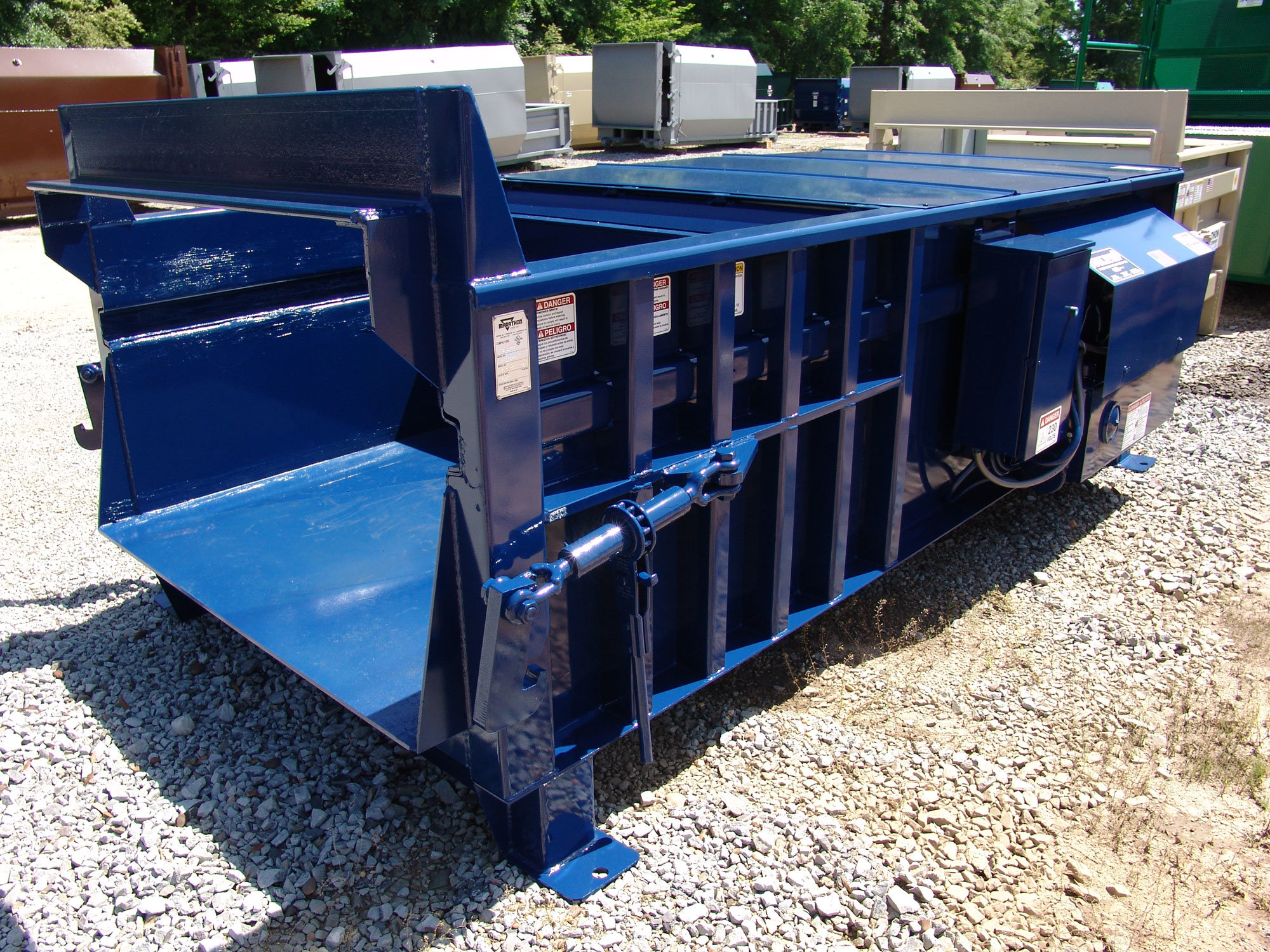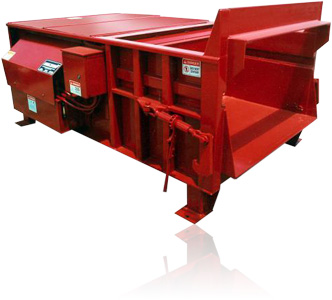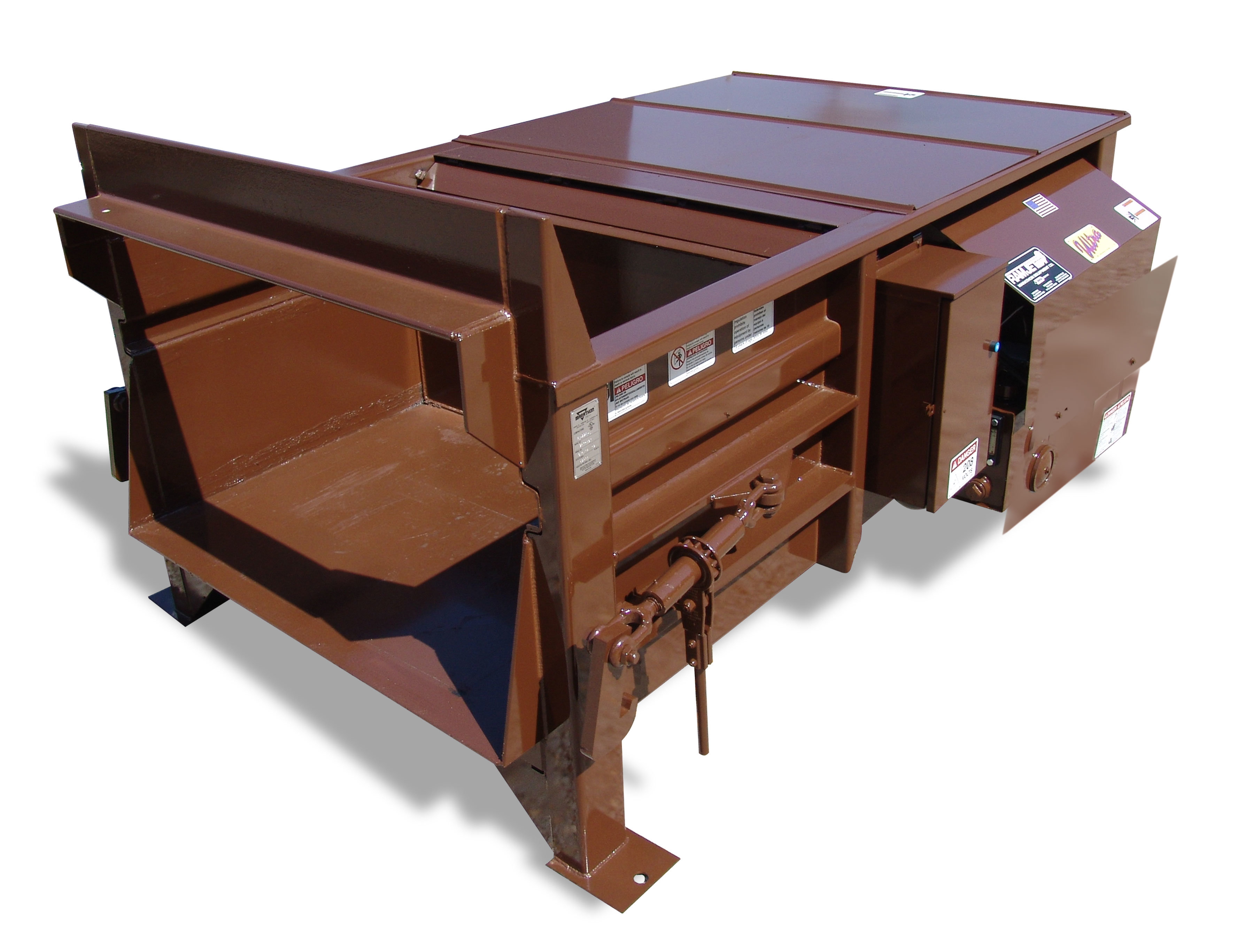Why Industrial waste compaction equipment is essential for efficient operations
Comprehending the Different Uses of Waste Devices in the Recycling Industry
The reusing market relies greatly on specialized waste devices to optimize handling and recovery. Each tool, from shredders to balers, serves a distinct objective that improves overall performance. Comprehending these duties is vital for enhancing sustainability efforts. Commercial garbage compaction equipment. As modern technology breakthroughs, new advancements arise, assuring to transform conventional methods. This evolution elevates essential inquiries concerning the future of waste administration and its effect on ecological conservation. What adjustments lie ahead for this essential sector?
The Role of Shredders in Product Handling
Shredders play an important role in the recycling market by successfully refining numerous kinds of waste products. These machines are made to minimize big items, such as plastics, steels, and natural waste, into smaller sized, workable pieces. This size decrease is vital for subsequent recycling procedures, as it permits much easier handling and sorting. In enhancement to assisting in recycling, shredders enhance safety and security by lessening the risk of injury linked with managing bulky waste things.
Shredders contribute to ecological sustainability by making sure that products are processed in a method that takes full advantage of resource healing. They can manage a varied series of products, making them functional devices in waste monitoring centers. The reliable procedure of shredders not just enhances the reusing procedure however likewise enhances the overall efficiency of waste diversion initiatives, advertising a circular economic climate. Their value in material handling can not be overstated, as they work as a foundational action in the direction of sustainable waste administration practices.

How Balers Enhance Efficiency in Waste Monitoring
Balers significantly enhance performance in waste administration by compacting numerous materials right into bales, which streamlines storage and transport. By pressing recyclables such as cardboard, plastics, and metals, balers substantially lower the volume of waste. This compression not just makes best use of area in reusing centers but additionally decreases the number of journeys required to transfer products, bring about lower fuel expenses and decreased environmental impact.
Furthermore, balers add to enhanced security in waste administration procedures. Portable bundles are less complicated to handle and pile, decreasing the risk of accidents related to loosened products. The consistent size of bundles permits extra reliable packing and discharging processes, simplifying operations within reusing centers. Additionally, balers can improve the total high quality of recyclables, as correctly compacted materials are much less most likely to be contaminated. Overall, balers play an important function in optimizing waste monitoring methods, promoting sustainability in the reusing sector.
Conveyor Solutions: Streamlining the Recycling Refine
Including innovative machinery like balers significantly enhances waste monitoring operations, but the performance of the recycling procedure is additionally boosted through using conveyor systems. These systems play an essential role in the seamless transportation of materials within recycling facilities. By assisting in the activity of numerous waste kinds, conveyor systems decrease hand-operated handling and lower the threat of contamination throughout the reusing process.
Furthermore, conveyor systems can be personalized to fit the unique layouts and functional demands of reusing centers. Their ability to operate constantly permits a stable flow of materials, boosting performance and guaranteeing that arranging my explanation and processing tools gets a consistent supply.
Furnished with attributes like flexible speeds and automated controls, conveyor systems can optimize the flow of products, significantly enhancing general performance (Commercial garbage compaction equipment). These systems are indispensable in modern recycling procedures, streamlining processes and adding to reliable waste management.
Arranging Devices: The Key to Material Healing
Sorting devices are crucial components in the recycling industry, significantly boosting the effectiveness of product recovery. These machines play a crucial function in the splitting up of various recyclable products, permitting for a streamlined procedure that maximizes resource removal. By utilizing sophisticated technologies, such as optical sensing units and air classifiers, arranging devices can recognize and classify materials based upon their size, weight, and structure. This capacity assures that steels, plastics, and paper items are effectively separated, minimizing contamination and improving the high quality of recycled result.
The operation of sorting machines substantially reduces the dependence on hand-operated labor, which can be both vulnerable and time-consuming to errors - Commercial garbage compaction equipment. Furthermore, the automation supplied by these devices speeds up the general recycling procedure, resulting in greater throughput and increased functional effectiveness. Consequently, arranging devices are important in attaining sustainable waste management goals, allowing the reusing sector to properly recover important products while decreasing garbage dump dependency

Innovations in Waste Tools for a Lasting Future
Current advancements in waste equipment are driving the reusing market towards an extra sustainable future. Developments such as automated sorting systems, which utilize fabricated knowledge and machine knowing, improve effectiveness by accurately determining and dividing recyclables. This causes More about the author higher recuperation prices and decreased contamination. In addition, advancements in compacting modern technology permit a lot more effective transport of materials, minimizing carbon impacts throughout transportation.
Furthermore, developments in shredding equipment enhance the processing of complicated materials, enabling the recycling of items that were when deemed non-recyclable. The combination of sustainable energy resources, like solar energy, in waste processing centers additionally adds to sustainability objectives. On top of that, technologies in biodegradable materials and waste-to-energy innovations are reshaping the landscape of waste monitoring. Jointly, these developments signify a transformative shift within the recycling industry, promoting not just environmental protection but likewise economic viability for future generations.
Regularly Asked Inquiries
What Sorts Of Materials Can Waste Tools Handle?
The kinds of products waste equipment can deal with consist of plastics, metals, paper, glass, and organic waste. Each equipment kind is created for specific products, maximizing performance and performance in sorting and refining different waste streams.
How Often Should Waste Tools Be Maintained?

Are There Safety Worry About Making Use Of Waste Tools?
Safety worry about using waste devices consist of potential injuries from mechanical breakdowns, direct exposure to unsafe products, and poor training. Appropriate maintenance, regular assessments, and worker education are important to reduce these risks effectively in any setting.
What Is the Ordinary Life Expectancy of Recycling Equipment?
The ordinary lifespan of reusing devices generally ranges from 10 to 20 years, depending on aspects such as usage strength, upkeep techniques, and technical advancements, which can significantly affect longevity and efficiency in time.
Exactly How Is Waste Equipment Powered in Recycling Facilities?
Waste tools in recycling centers is normally powered by power, though some makers might use different energy resources like gas or diesel. This power allows efficient processing and transformation of materials for reusing purposes.
Shredders play a critical role in the recycling sector by successfully refining various kinds of waste products. They can handle a diverse websites array of materials, making them functional tools in waste monitoring facilities. Balers significantly boost efficiency in waste administration by condensing different products right into bundles, which simplifies storage space and transportation. The kinds of materials waste tools can handle consist of plastics, metals, paper, glass, and natural waste. Safety worries with making use of waste equipment include potential injuries from mechanical breakdowns, exposure to dangerous products, and insufficient training.